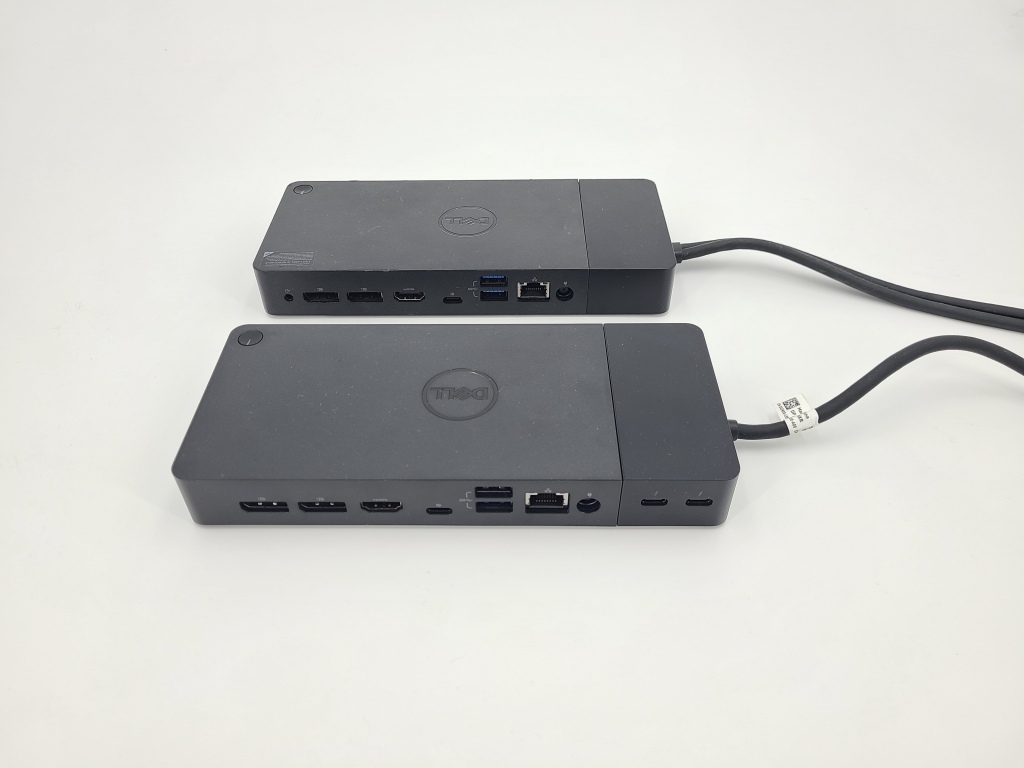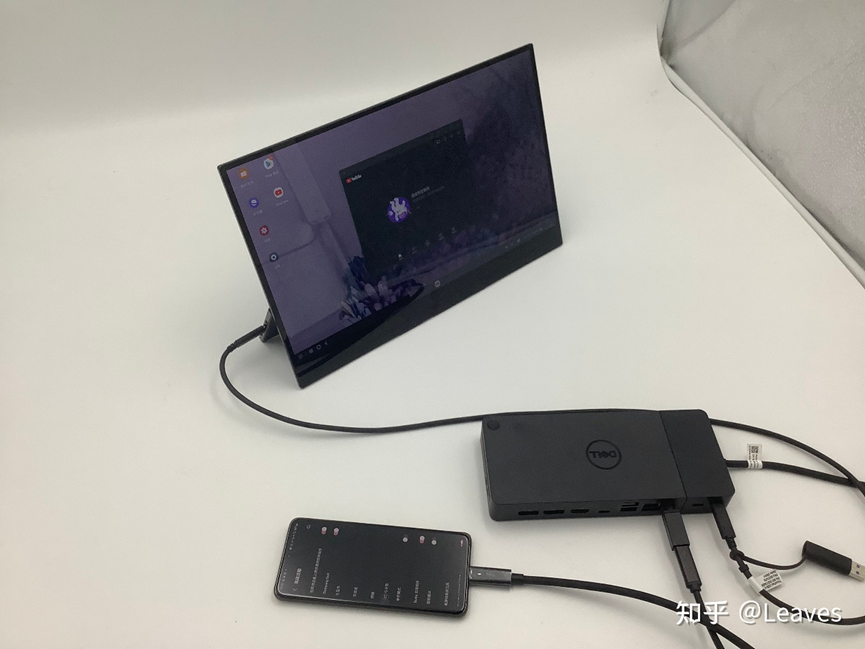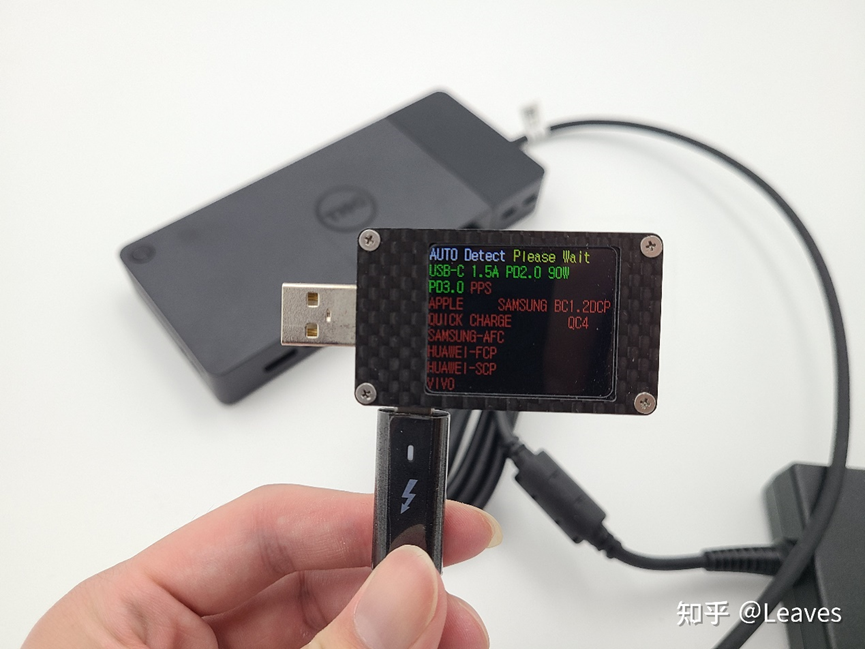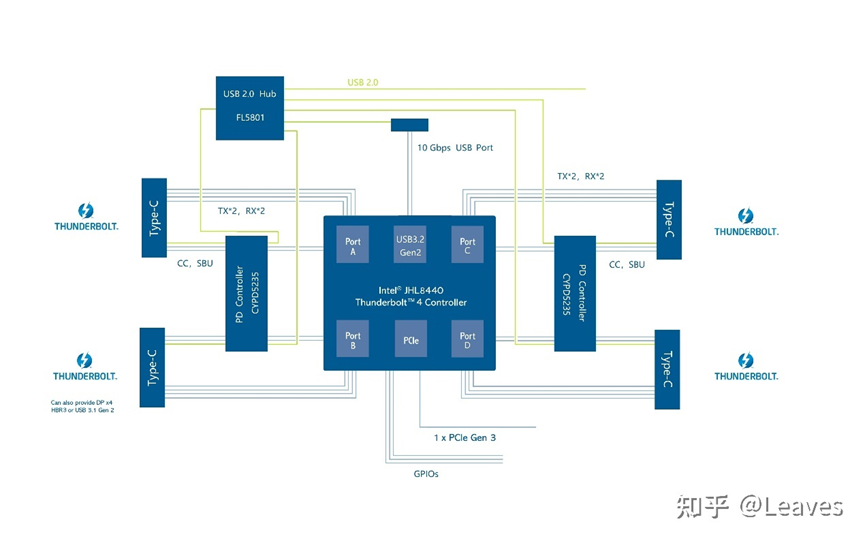

Dell WD22TB4 Dock review and Teardown
source link: https://dancharblog.wordpress.com/2022/10/24/dell-wd22tb4-dock-review-and-teardown/
Go to the source link to view the article. You can view the picture content, updated content and better typesetting reading experience. If the link is broken, please click the button below to view the snapshot at that time.
This article, by Leaves, has been translated and re-posted with permission.
[Buy the Dell WD22TB4 Dock on Amazon] (affiliate link)
Introduction
The WD22TB4 dock was released in April 2022 and I had a basic understanding of the it via the Dell website at that time. It appeared that except for the host module being updated to Thunderbolt 4, the main body was exactly the same as the WD19/WD19S series; no HDMI2.1 and the main USB interface still being 5Gbps, which was very disappointing.
The WD19S launched in 2021 removed all 3.5mm ports from the WD19 series. (editor’s note: WD19 reached general availability in 2019 – hence the “19” in the product name; likewise WD22 was launched in 2022) It is estimated that Realtek could not guarantee audio chip supply which led to the change. Similar problems can also be observed on HP’s G4 Thunderbolt dock, which had very mature audio port design on the PCB, but no chip and port installed.
After I got the WD22TB4, I realized something else. Compared to the older WD15/TB15 generation, Dell is very keen to make a separate module for the host connection mechanism and re-use larger portion of the dock. Curiously, the volume of the host module itself is almost equal to Dell’s own multi-port hubs DA200/ DA310. In addition, TB18DC and WD19DC, use a dual USB-C enhanced power supply (up to 230W) solution based on a special host module, which indeed is very nice compared to Lenovo and HP’s combo USB-C + barrel-jack DC cable solution.
Other than the Dell dock family doing this wonderful modularization there are other cool features like the LED indicator on the cable. But it is a pity to realize these features come with serious drawbacks.
WD22TB4 Specs


Predicted Design
The whole series of WD19/WD19S/WD22TB4 docks can be separated into two components: the host module and the main body of the dock, so we’ll treat those separately.
For the main body of the dock, the WD22TB4 manual claims that WD19 series docks can be upgraded to TB4 with a new host module. With the exact same docking station functions, I think the WD22TB4 main body is still using the old WD19 design.

I have disassembled both WD19 and WD19DC before – WD22TB4 is the same except for missing audio-bits and select component substitutions.
As for the host module, here is the WD19TB module for reference. (Photos from TaoBao listing)



WD19TB’s host module structure is relatively simple, mainly a PD controller + thunderbolt controller, but Dell’s design is different from other dock brands.
In most cases, CYPD5235 would be chosen as the PD controller for JHL7440, but Dell uses TPS65987DDJ here. In addition, one CYPD2122 is used. This controller also works as the main PD controller in WD19 and WD19DC host module. It seems that Dell intends to dedicate CYPD2122 as the PD controller for the host.

Back to the WD22TB4 prediction, the host module should still be a simple thunderbolt structure plus a CYPD2122 design such as:
- JHL8440+FL5801+Cypress/TI dual USB-C controller+CYPD2122
The three downstream ports of JHL8440 are reserved for two TB4 ports, and the last one is downgraded to DP-only which is connected to the module interface along with native USB.
Unboxing
There are a few things in the box: the dock itself, power brick, cables, and user manual. I have to say that the included power brick looks pretty frustrating. I would appreciate if it could be replaced with the Alienware style.



WD22TB4 Full Body


WD22TB4 vs WD19DC
For the dock main body, the WD19 series has two 3.5mm audio ports with the remaining interface functions and positions being exactly the same.

WD19DC top, WD22 bottom – same for subsequent photos


Host Module Comparison
It is worth noting that the edge connector interface of WD22TB4 and WD19DC has all contact positions as shown, while WD19 and WD19TB modules have fewer contacts.


Teardown
Main Body
The dismantling starts with the main body.
Just like the WD19, tearing off the rubber feet reveals the mounting screws. The only difference is the product label.

The internal structure looks… identical. The actual position of the dock power switch is in the bottom of the rubber tube next to the fan. It is directly pressed by the long milky white light guide column connected to the switch button on the PCB. The press feel of button is very soft – I criticized that in WD19 teardown.




PCB close-up… dude, this looks exactly the same as the WD19.




Main chips are exactly the same, same with the PCB, except for the unpopulated audio portion.
Seriously, don’t you consider changing the name to WD19TB4S, Dell?
Re-introduce the 2019 design in 2022 and rename it? That is AWESOME!
Host Module
Dell’s passion for self-developed modules makes it extremely troublesome to deal with cable/plug damage since replacements are expensive. But I still like the little white indicator that is equipped in this dock family.
Here it can be seen that the shell of the TB4 module is completely different from WD19DC/WD19 module.

WD19 top, WD22 bottom

WD22 left, WD19 right


It is not recommended for users to disassemble to this extent. This cable->PCB connection mechanism is somewhat similar to the LGA connector used by Intel processors – the PCB exposes the contacts and the cable end butt-joints with dense pins.
The cable installation mechanism is positioned by the screws mounted on the PCB and fastened by the nuts. This connector has been used since the WD19. The dense pins at the cable end are easily damaged during disassembly/assembly.
By the way, the number of contacts is significantly more than the number of pins in USB-C. (editors note: the extra pins are probably for power/ground since the contacts are so small)



Closeup of JHL8440.

TB4 module bare in the dock:

IC tracking
The changes of the dock body part relative to WD19 are marked in the figure. In addition to two abandoned audio chips, the DP switching IC is replaced with TI SN74CB3Q3125.
PCB details
To be honest, most of the wiring is on an inner PCB layer so following connection logic is impossible.


On the edge connector part of the host module, you can see four differential pairs near the key, which should be DP output, but no corresponding wiring can be found on the main body side, so no useful conclusion here.


The wiring to the host thunderbolt port can be seen.

The end part of the edge connector seems to be completely unused. I don’t know what’s the point of using a full-size interface for the TB4 module – just to make the connection more stable? These vacant contacts are more than enough to take a PCIe x1 wiring though I don’t know if Dell has a further plan for this.

Several traces at the end of the edge contacts on the reverse side. Compared with the WD19TB module, it should have more control functions, but the details are unknown.

Close-ups for the rest of the parts are below (click for hi-res photos). The structure is relatively simple and I’ve provided no detailed analysis here. Two missing USB audio chips on both sides and two related 3.5mm socket locations are clear.
It is worth noting that the multi-function USB-C port forms a switching structure with the adjacent HDMI2.0 interface, and only one of them can work for video at a time. It can be used for DP++ for switching between DP and HDMI.
2019-01-30? Dude, you are 2022 product!
Functional Verification
Module swap
Does the dock work after replacing the host module?
Yes but you need to update the firmware as Dell says in the manual. The WD19DC firmware before the update cannot support the TB4 module, a connection cannot be detected by computer, the indicator does not respond, and only the PD charging works.

With firmware updated, it can be transformed into a WD19TB4.

Display Function Check
A portable monitor that only supports DP1.2 is used to test. Connecting to a downstream Thunderbolt port with dock in Thunderbolt mode, 4K 60Hz display is supported.

When the dock is connected to a 2080ti USB-C port, it is completely normal, but when connected to UHD620 via Thunderbolt 3, the portable display under the multi-function USB-C port only works at 4K30Hz. And due to the low power delivery capability of this USB-C port, the screen can only maintain low brightness. It seems that this multi-function USB-C port has some compatibility problems; it can only maintain a 2-Lane DP Mode in some scenarios.

The phone connects normally and Samsung DEX functions ok.

Power Delivery Check
The power supply used in previous tests was a USB-C PD charger – not what Dell provides in the box. Even with a 100W PD source, the protocol sniffing obtained on the laptop charger is only 60W.

Dell claims the dock has a 90W power delivery capacity for non-Dell laptops – which does work when you use the original Dell PSU.


Although not like HP directly strangling third-party DC adapters, Dell has also taken some measures in adapter identification. By the way, this dock will not work properly with HP’s 7.4mm plug DC adapter.
Topology Detection
Under GC-Titan Ridge TB3 port:
All IC device names are not displayed by HWinfo, so the markings here are speculative. The overall structure is similar to the G4 docking station. The Hub structure of USB 2.0 Full Speed and Super Speed+ is also separated due to the special structure of JHL8440.
When connected via the USB-C output on 2080ti, no difference in the observed structure.
Notice that there are two devices hanging under the USB 2.0 hub structure. One of them must be a PIC32MX40F128H, but HWinfo still cannot display enumerated names of these two devices, so it is impossible to determine which one is and what is the other one. It is reasonable to guess the other one it is a fan controller, but the AMC6821 only provides I2C and SMB communication ports, which are theoretically controlled by PIC32MX40F128H.

Theoretical topology of WD22TB4:
The only two USB-C ports on the dock body are hung under the RTS5487 to enjoy 10Gbps speed while the other USB-A ports are 5Gbps.
Additional Details
There are also some vital details to notice in the WD22TB4 manual where complicated multi-display configurations are mentioned. To summarize, JHL8440 can provide two distinct video signals in Thunderbolt mode, but can only provide one video signal in DP Alt Mode. When expanding displays beyond the number of video signals, the VMM5331 MST hub chip is used.


Bug in DP Alt Mode
As a JHL8440 dock, it can indeed work in DP Alt Mode, and both downstream TB4 ports can be used as DP Alt Mode ports, but the USB 2.0 function fails causing touch-screens to be unavailable.
Manual issue
Dell has a confusing note in the manual for the WD19TB and this WD22TB4. In the display extension part of Thunderbolt mode, the label of HBR3 x4 + HBR3 x1 appears, but 32.4 Gbps is the bandwidth of 4-Lane HBR3. Where does the extra 1 Lane come from and how it used in dock? Confusing content.

Conclusion
With the release of the WD22TB4, I really don’t know what Dell’s docking station department is doing. No new docking station body, only a new TB4 module and firmware update plus a delayed release until 2022. (editors note: competing Thunderbolt 4 docks were launched in 2020)
From a functional view, it is true that few manufacturers include multi-function USB-C ports, but the remaining functions of the WD22TB4 have no advantage over third-party docks from 2020/2021. And JHL8440 itself can provide multiple downstream TB4 interfaces, which make the MFDP USB-C port redundant for most users.
Obviously, the modular dock structure offers a major advantage for rapid iteration of two parts.
However, since the release of the basic DP Alt Mode module, DC enhanced module, and Thunderbolt module in 2019, there has been no major update. In 2021, audio components were removed and renamed as the WD19S series. The only change was the label, and two 3.5mm jacks.
Where is HDMI 2.1? VMM5331 has been used for almost 4 years and it is time for it to be upgraded.
PCIe is still unused, although that’s the same on most other docks. (editors note: its a x1 interface and not that helpful but could be used for M.2 SSD)
In short, for a product with only the host module update, it is hard to discuss anything meaningful. This new name WD22TB4 is really misleading. It also means no possibility of a new Dell dock body for the WD series in 2022. (If one is planned, how should it be named? Abandon the WD prefix?)
I can only say that the WD22TB4 is disappointing.
Recommend
About Joyk
Aggregate valuable and interesting links.
Joyk means Joy of geeK









